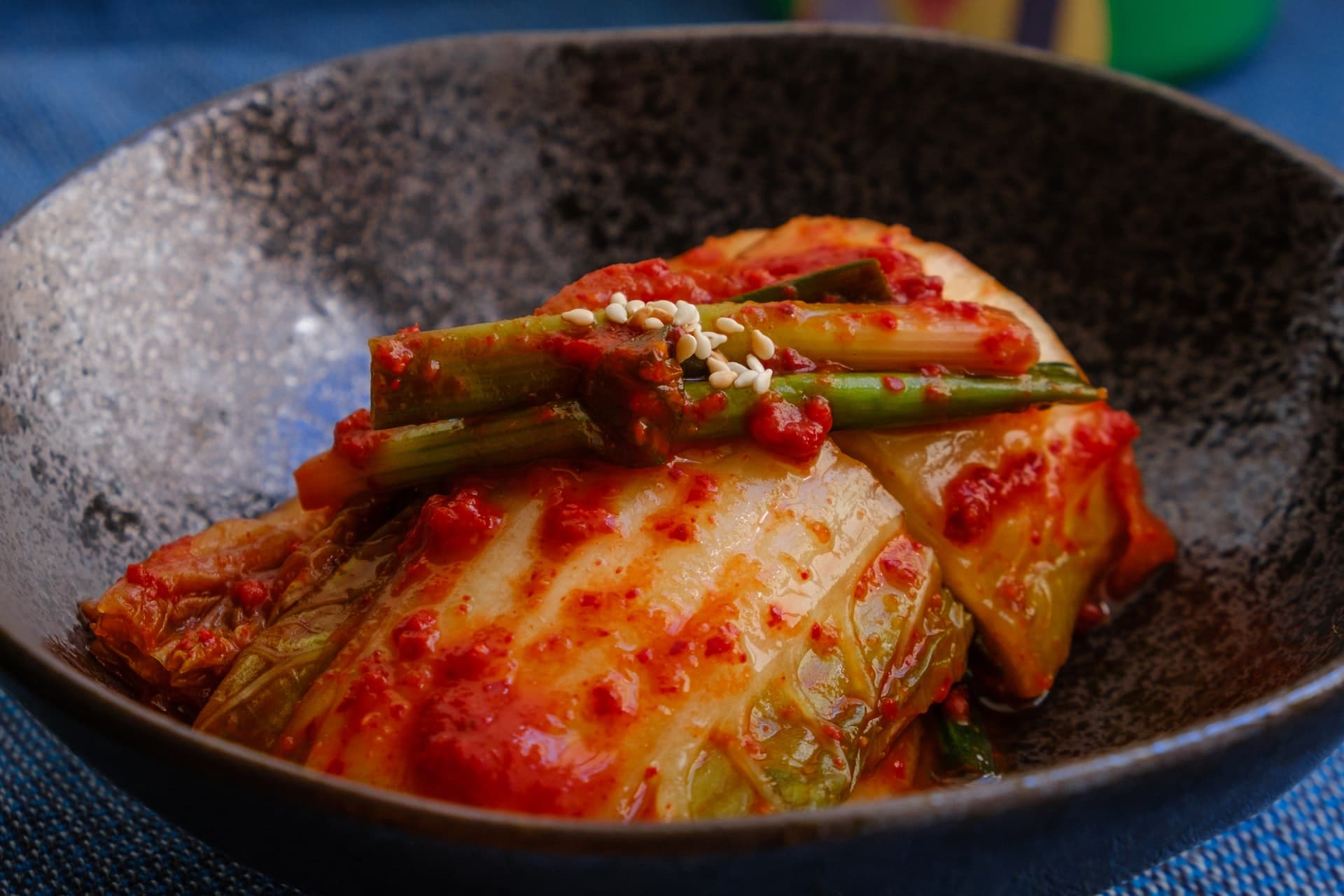Kimchi or gimchi is a Korean side dish made of fermented vegetables. Korean usually make use of vegetables like napa cabbage and Korean radish.
The vegetables are there fermented with a variety of local spices like gochugaru (Korean chili powder), garlic, sliced ginger, and salted seafood. There are regional variations of kimchi across South Korea, and the traditional practices dictate the differences in how the kimchi is prepared.
While we all know that commercial kimchi can easily be purchased in supermarkets, many families in South Korea still make their own at home, because the ingredients are easy to find. Almost every family has a special generational recipe handed down from their elders.
Traditional kimchi was usually fermented in earthenware that was then stored in-ground.
This prevented the freezing of the kimchi during the cold winter months. This technique allowed the kimchi to ferment a proper rate while keeping it cool enough for long-term preservation. Today, people use kimchi refrigerators to mimic the conditions of the traditional method of storage of kimchi.
Is kimchi spicy?
Kimchi has mild spiciness because Koreans generally love a little kick to their flavors. Kimchi is also fermented with a generous amount of garlic, which naturally lends a special flavor that combines with the chili powder well enough. Heat is not the goal of eating kimchi – it is a digestive that helps people digest their food well, and it also brings a special aroma and vat of wonderful flavors to every meal.
While it is not a dip or sauce per se, it can be viewed as a flavor enhancer for many Korean dishes because of how it was prepared and what ingredients were included in the fermentation process.
Cucumber kimchi is a variety of kimchi made with unwaxed English cucumbers, unrefined sea salt, gochugaru (pepper flakes), and scallions. As we have discussed earlier, there is a ton of variation as to how kimchi is prepared. The cucumber kimchi variation is interesting because it combines the wateriness of cucumber and the flavors of more traditional kimchi. In the end, you have a sort of food-beverage combo in one neat package.
White kimchi, on the other hand, or baek kimchi is a non-spicy variant of kimchi that is meant usually for kids who can’t tolerate the mild heat of traditional kimchi recipes. White kimchi is vegan-friendly and vegetarian-friendly, as well. White kimchi is made by fermenting vegetables in a fruity, salty brine solution. This solution is extremely important to the fermentation process because this is where all the flavors are going to come from.
In addition to the dependence on the brine solution, some Koreans also prepare this variant of kimchi with jujubes, some pine nuts, and chestnuts. These additional ingredients add multiple dimensions of flavor to the white kimchi, which makes it even more special.
Is Kimchi the same as sauerkraut?
Kimchi is similar to sauerkraut, and it is believed that this European side dish may have Chinese origins. Sauerkraut is normally made with just a brine solution, while kimchi is made with different seasonings and vegetables to impart the flavors that we all love. Also, kimchi is not sealed completely during the fermentation process as Koreans believe that a little air exchange allows for unsavory gases (the byproducts of natural fermentation) to escape, leaving the kimchi more flavorful.
But as a result of this method, the Napa cabbage, and other ingredients are not fully fermented, and they appear to be somewhat raw even after fermentation. Sauerkraut, on the other hand, becomes very soft, to the point that the vegetable fibers begin to part easily. Additionally, sauerkraut is sealed off completely during the fermentation process, so it makes use of anaerobic bacteria. Kimchi, on the other hand, can have as many as ten probiotic, aerobic bacteria in the mix at any one time.
Kimchi Ingredients
The following are some of the common ingredients used for making kimchi in South Korea:
- Shil gochu – Shil gochu, or chile pepper threads are used both as a seasoning and as a decorative element in kimchi. These are reddish-brown when dried and are two to three inches in length each. Shil gochu has a smoky and peppery flavor.
- Saeujot – Also known as salted shrimp, saeujot is considered as one of the foundations of traditional South Korean cooking. Pickled shrimp emerged around the time that South Koreans also began pickling herring and other kinds of fish. It is used for flavoring kimchi.
- Jeotgal – Also known as anchovy sauce, the South Korean version has a milder and gentler flavor compared to say, anchovy sauce in Thailand. The Jeotgal is responsible for much of the amazing umami flavor in kimchi. Jeotgal is usually combined with saeujot when fermenting kimchi.
- Seogum – Seogum is coarse or unrefined sea salt or rock salt. It is believed that Napa cabbage that has been wet-brined produces better and deeper flavors than dry-brined Napa cabbage. Take note that manufacturers have varying grain sizes, so this may result in either over-seasoning or under-seasoning your kimchi.
- Manul – Manul/garlic is ground up and applied to the mixture to imbibe the Napa cabbage with a powerful and lasting garlic flavor. Be careful with the amount of manul that you use, however, as too much garlic in the mixture can result in bitter kimchi.
- Saenggang – Saenggang/ginger is another base flavoring for kimchi. Apply a ratio of 1:2 when measuring ginger for kimchi, with how much garlic you are using.
- Sultang – Sultang-sugar is used as a flavor balancer as you will be combining the flavors of various vegetables all at once during the fermentation process. Not using enough sultang can also result in bitterness. If no sugar is available, you may use the purees of common fruits such as apple, sweet onion, and pear.
- Buchu – Korean chives are only mildly garlicky, and are added to different variations of kimchi as a flavoring.

